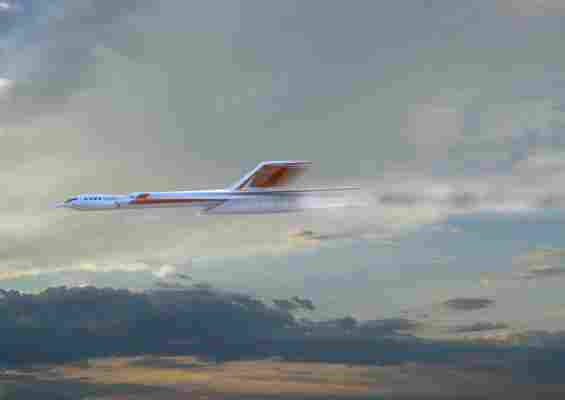September 24,2022
This Concept Supersonic Jet Could Change Travel Forever
by David Stewart
Imagine the scene: It’s 10:30 A.M. in New York City when you board your plane to London. By 11 A.M. your aircraft is over the Atlantic Ocean, soaring through an open sky. Just as you settle in for the flight, the decent to London begins, and you’ve landed at your destination. You look at your wristwatch—the flight took 30 minutes total.
This is the future of air travel for Canadian designer and engineer Charles Bombardier, and his concept supersonic jet, the Skreemr. His vision involves a jet that would be shot out of a magnetically charged electric launch system at gunlike speeds. From there, the 75-passenger craft would ignite liquid oxygen in order to rise in speed and altitude until it was moving at such a rate to successfully compress incoming air for engine combustion, burning hydrogen and compressed oxygen to accelerate to an unbelievable speeds of Mach 10, or about 6,600 m.p.h. at 40,000 feet (For comparison, Boeing 747s have a cruising speed of roughly 570 m.p.h.)

To be sure, there are a whole host of extremely difficult issues for Bombardier and his team have to figure out before the Skreemr ever leaves the drawing board. For one, the group has to conjure a way to ensure passengers do not pass out from the pressure during takeoff and at the intensely high, mid-flight speeds.
Yet, these issues aren’t slowing down Bombardier’s ambitions—or other companies such as Airbus, which recently patented designs for the Concorde 2, a plane that could travel at speeds in excess of Mach 4.
Who knows? Breakfast in New York, lunch in London, and dinner in Tokyo could someday all happen on a Monday.






